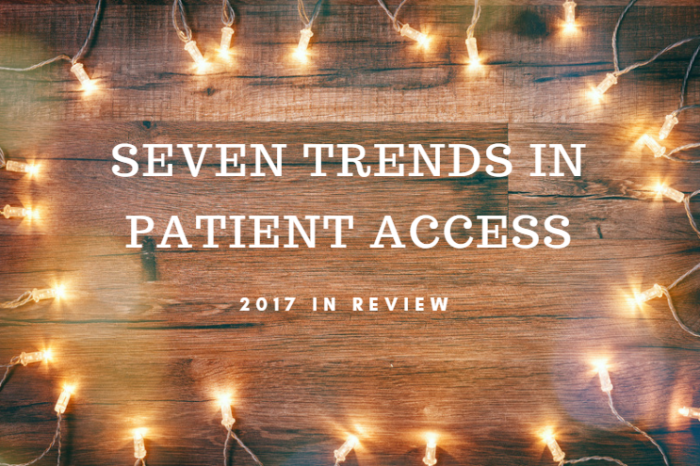2017 in Review: 7 Trends in Patient Access
December 14, 2017
As 2017 draws to a close, let’s take a look back at the highlights in patient access this year.

1. Breakthrough cardiovascular medicine eludes patients.
Game-changing PCSK9 inhibitors can lower LDL, or “bad,” cholesterol. But health plans rejected prescriptions for them at alarming rates—with devastating effects for patients.
Learn More:
VIDEO: Access Barriers Affect Real People
BLOG: Health Plan Report Cards Reveal High Rejection Rate for Cholesterol Meds
2. Non-medical switching sends patients and doctors spinning.
Cost-driven formulary switches mean the new year could bring unhappy surprises for patients who depend upon a stable medicine regimen. And as patients struggle, health plans may discover that non-medical switching actually increases medical costs.
Learn More:
VIDEO: Diabetes and Non-Medical Switching
BLOG: Non-Medical Switching May Increase Health Care Costs, New Study Finds
3. Headache community rallies for heightened awareness.
The patient community brought a unified voice to the issues of stigma, impact and treatment for migraine and headache disorders. But will a forthcoming ICER cost-effectiveness report complicate access to long-awaited treatments?
Learn More:
VIDEO: Who Are Headache Disorders & Migraine Hurting?
BLOG: Research on Preventive Drugs Raises Hopes in the Migraine Community
BLOG: Putting a Price on Migraine Prevention
4. Hepatitis C plagues new patient population.
While Medicaid continued to shirk its duty to existing hepatitis C patients, the disease took hold in a new patient population: pregnant women and infants.
Learn More:
BLOG: Medicaid Systems are (Still) Blocking Hepatitis C Patients from Treatment
VIDEO: Protecting Women & Infants from Hepatitis C
5. America’s opioid epidemic magnifies need for balanced pain treatment.
Now officially a public health emergency, the opioid crisis demanded that policymakers improve access to multimodal pain treatment.
Learn More:
BLOG: The Generation that Ends the Opioid Epidemic
VIDEO: Finding an Opioid Abuse Solution that Works
6. FDA guidance sparks dialogue on interchangeability.
The Food and Drug Administration settled on distinct names for biological medicines and offered long-awaited draft guidance on a pressing question: Which biosimilars will be considered interchangeable?
Learn More:
BLOG: FDA Settles on Random Suffix Approach for Naming Biologics & Biosimilars
VIDEO: The Interchangeability Promise
7. Cost cutting jeopardizes treatment access for movement disorder patients.
Health plan coverage design continued to limit access to treatment for those with movement disorders. Meanwhile, economic analysis from the Institute for Clinical and Economic Review cast a shadow on the availability of an innovative treatment for tardive dyskinesia.
Learn More:
BLOG: Movement Disorders Group Explores Impact, Treatment Barriers in New White Paper
BLOG: Advocates Push Back on ICER’s Tardive Dyskinesia Report
Rejoin the Institute for Patient Access blog on January 4 to follow these – and emerging – patient access issues in 2018. Happy holidays!
Tags: Biologics, Cardiovascular, Cost Value, Diabetes, Hepatitis, Infant, Integrated Care, Neurological, Non-Medical Switching, Pain, Regulatory IssuesCategorized in: Blog

